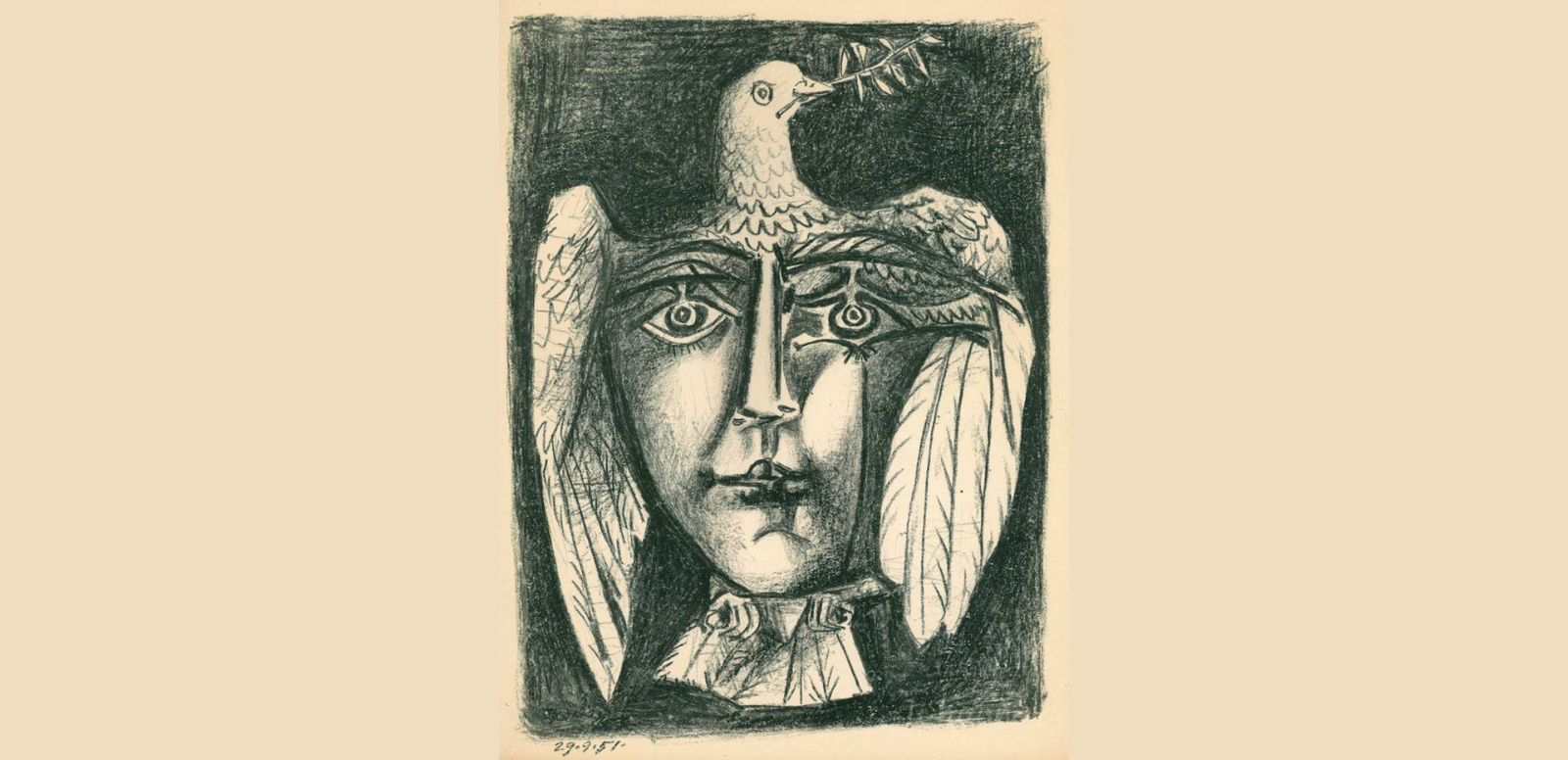
The dove, considered a universal symbol of pacifist ideas worldwide and of harmony between people and peoples, is an emblem that Pablo Picasso has represented in several of his works, such as Pigeon in flight on a black background (1950), the one shown in this article The Face of Peace (1951) or the drawing used in the poster for the World Congress of the Supporters of Peace held in the Pleyel Hall from April 20 to 23, 1949 in Paris.
The truth is that the figure of the pigeon has been present in Picasso's works since his beginnings, influenced by his father José Ruiz Blasco, who was a pigeon fancier and a realist painter, known for his pigeon compositions, studied in the open air (Jiménez Fernández, 2023).
The recurrent use of the image of pigeons in different works by Picasso, some of them adopted worldwide as universal symbols of peace, is widely known and analyzed. And it has also generated controversies, such as the one expressed by Ilya Ehrenburg (1953): "Snobs make fun of them, the ill-intentioned accuse Picasso of having sought easy success, however, his doves are inseparable from the rest of his creations [...] the dove alone is not enough to know Picasso, but only Picasso could draw it".
In accession, the same author contextualizes the importance and significance of doves in Picasso's work as follows: "Until recently, Picasso's name was well known to artists, writers, experts and lovers of painting, as well as to snobs and men of the world afraid not to follow the fashions of the moment. But now Picasso's name is known to millions of simple men, his pigeons have flown over the five continents of the world [...]. However, for Picasso's pigeons to reach millions of people, many things were necessary: the complex artistic path of this man, the immense mastery achieved by him, the knowledge of men, also linked to his life and, finally, the artist who, after having conquered world celebrity with a signature that bankers' wives and minister lovers have put in the spotlight, has turned to simple people" (Ehrenburg, 1953, as collected by Robles Tardío, 2011).
Pigeons have become icons in the work of the artist from Malaga, with a personal meaning of his own family history, but also as a representation of the causes he defended, with all their nuances and complexity.
References:
- Robles Tardío, Rocio (Ed) (2011). PICASSO AND HIS CRITICS II. The communist years, 1944-1958. Ediciones de La Central. Barcelona. Spain.
- Ehrenburg, Ilya (1953). The Pigeons of Pablo Picasso. Appears in: PICASSO AND HIS CRITICS II. The communist years, 1944-1958. Ediciones de La Central. Barcelona. Spain. Edition by Rocío Robles Tardío.
- Jiménez Fernández, Lourdes. José Ruiz Blasco. Real Academia de la Historia. Available at: https://dbe.rah.es/biografias/60144/jose-ruiz-blasco
- Picasso, Pablo. Dove in flight on black background. 1950. Lithograph. Lithographic pencil, gouache and gouache on lithographic paper transferred on stone. Paper: 50.4 x 66.3 cm. Imprint: 49,5 x 64,7 cm. Picasso's Birthplace Museum.

